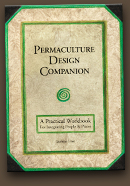Land :: Wild Soil
 In nature there is no uncovered soil for long. An occasional tree uprooted by wind, a freshly dug mole hill or a landslide is soon densely covered by vegetation. This protects the soil from erosion drying out and dying. Even the surfaces of rocks, deadwood and manmade materials are colonised by mosses and fungi in an ever flow of life towards more complex and diverse ecosystems, supporting more species. As soil is the medium in which our life support systems grow, permaculture systems have a principle of keeping soil covered wherever possible.
In nature there is no uncovered soil for long. An occasional tree uprooted by wind, a freshly dug mole hill or a landslide is soon densely covered by vegetation. This protects the soil from erosion drying out and dying. Even the surfaces of rocks, deadwood and manmade materials are colonised by mosses and fungi in an ever flow of life towards more complex and diverse ecosystems, supporting more species. As soil is the medium in which our life support systems grow, permaculture systems have a principle of keeping soil covered wherever possible.
This principle is called wild soil. In practice this means preferring perennial and self seeding plants; protecting bare soil and clearing ground for cultivation through mulching. Perennials live for more than one year, so this can include trees, bushes, herbs and roots. By their nature they have bigger, more established root systems and so can often withstand more extremes of weather, pests and disease. This provides resilience, extremely desirable in the face of erratic weather and legions of slugs. Think of the robustness of a blackcurrant bush compared to a carrot seedling!
We love normal annual vegetables, however introducing a few perennials that don’t need to be planted year after year, means much less work involved too. A good example are perennial brassicas and alliums, which can replace in flavour, if not in texture, cabbages and onions. A shift in perspective can cultivate herbs eg mallow and trees eg lime as salad grown on bushes and trees.

